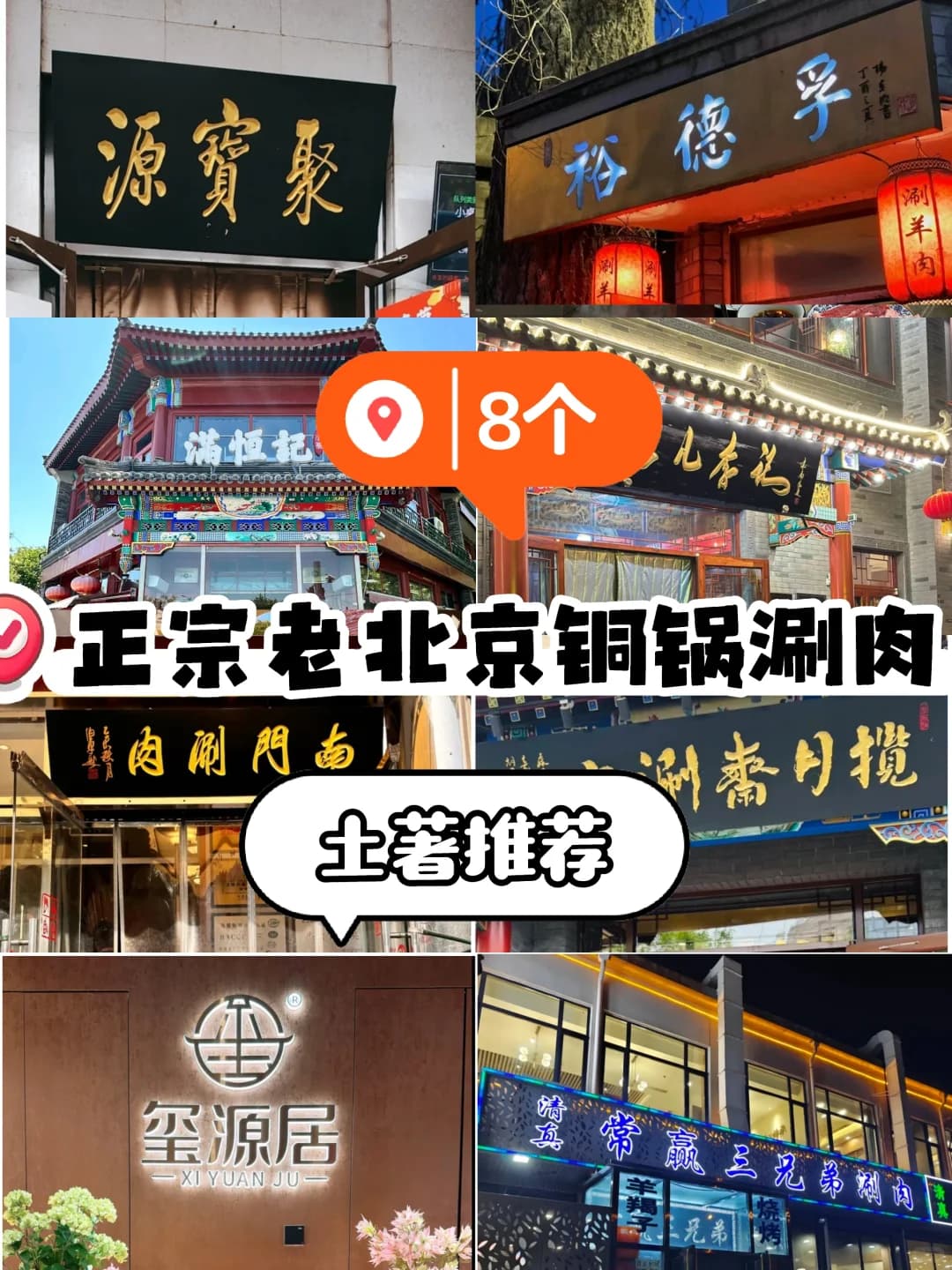Take a stroll through Beijing's hutongs this autumn, discovering charming doorways that showcase the rich seasonal ambiance and local culture.
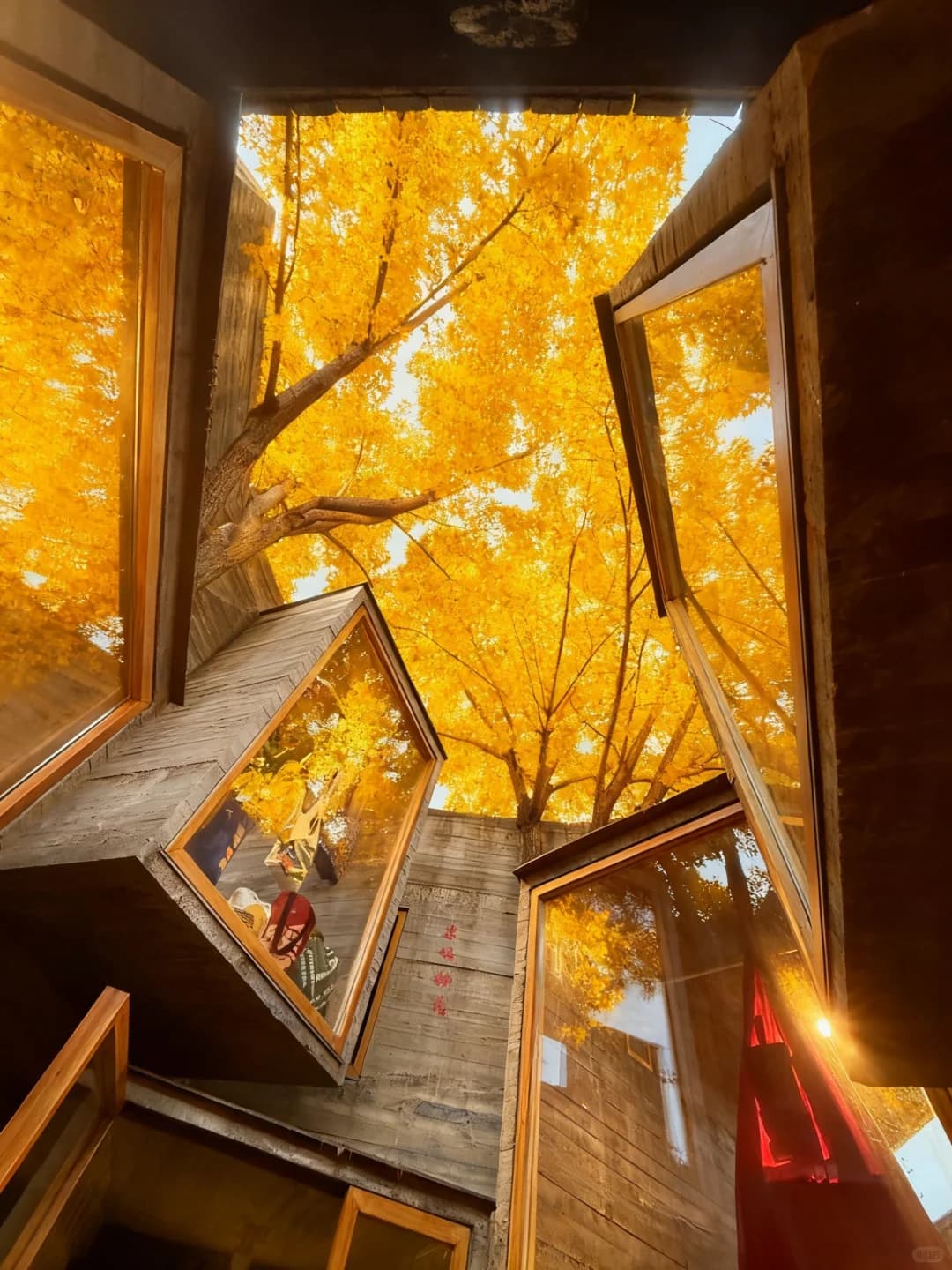
That afternoon, I initially just wanted to go to Wangfujing to buy a pair of shoes, but the navigation led me down a quiet little alley. From a distance, I could hear the “dong dong qiang” sounds of gongs and drums, like someone was striking a heartbeat in the air. I followed the sound, and when I looked up, I saw the “Zhengyi Ci Theater” sign, an old wooden plaque with black background and golden letters, quietly hanging on the gray brick wall. The entrance only had a narrow opening, almost like it was intentionally hidden away.
As I pushed the door open, I entered a narrow hallway with dim yellow lights, and the cobblestones beneath my feet felt a bit rough but had a pleasantly cool dampness. Continuing inside, the entire theater unfolded like an old Beijing suddenly revealed: three sides of corridor, delicate wooden railings, black lacquered pillars, and a ceiling adorned with faded cloud patterns. I instantly forgot about buying shoes and thought, “This place is definitely gonna look great in photos.”
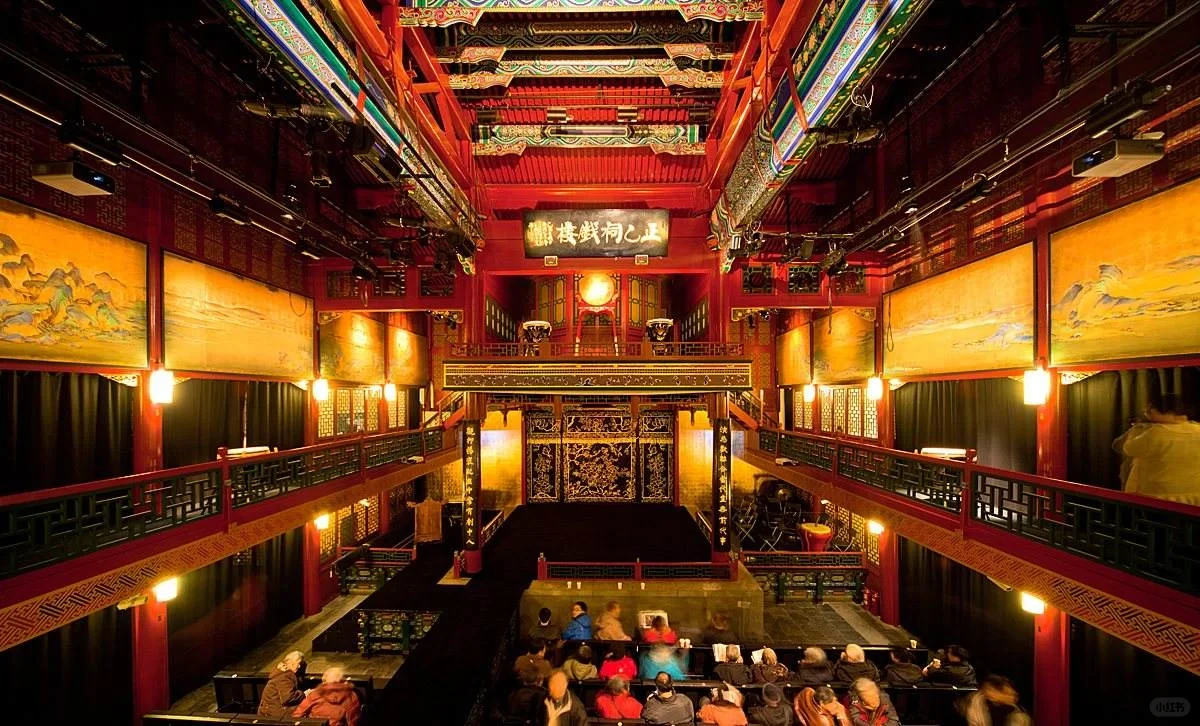
That day, they were performing “Sancha Kou”. As soon as the actors appeared on stage, I was completely stunned—it turns out Peking Opera’s “darkness” can really be performed during the day: Two people were sparring in the dark on stage, their eyes shining like light bulbs. One did a somersault that brought him just a meter away from me, the wind from his sleeves hitting my face. Next to me, an old man was watching and recording on his phone, quietly explaining to his grandson, “This is called ‘carpet skill,’ it took twenty years of practice to land this well.” At that moment, I suddenly understood, Peking Opera isn’t “old,” it’s “alive,” alive in the notes of the small voices and in the light in the old man’s eyes.
During the ten-minute intermission, I sneaked over to the backstage entrance, peeking through the bamboo curtain: The actors kicked off their thick-soled boots, took a big swig from their thermos, and used paper towels to wipe their faces before removing their makeup. The rhinestone headpieces went “clatter” as they fell into aluminum lunchboxes, like a tiny meteor shower. Turns out even the “big shots” need to hydrate and remove makeup after performing, just like I chugging cola after staying up late to work on a PPT—suddenly felt very relatable.
When the performance ended, the crowd dispersed quickly, leaving the theater so quiet I could hear the wood breathing. I wandered to the side staircase and discovered a small door at the corner on the second floor. Pushing it open led me to a mini exhibition hall showcasing old vinyl records, embroidered backdrops (the stage curtain), and a playbill from 1956, with tickets priced at 0.25 yuan. The security guard noticed me peering and casually mentioned, “Next Saturday there’s a short performance + explanation, 50 yuan, you coming?” I immediately scanned the code, jotted “next Saturday” down in my calendar, feeling more enthusiastic than during a meeting with my boss.
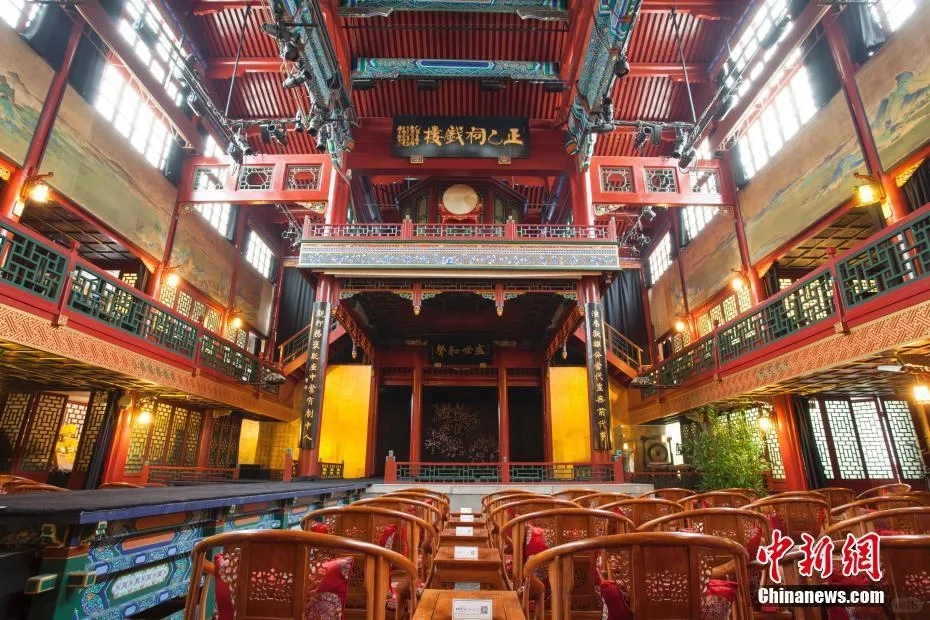
| Item | My Mistakes/Happy Discoveries | One-Sentence Advice |
|---|---|---|
| Buying Tickets | During my first on-site purchase, only corner seats were left, and my view was blocked by a pillar | Reserve a seat in advance on the “Zhengyi Ci Theater” WeChat account, middle of the second floor in the front row has the best view and doesn’t block faces in photos |
| Timing | Afternoon shows start at 14:30 on weekends, after which you can still visit Wangfujing Night Market | Arrive 30 minutes early, check out the old photos in the lobby, you can’t enter after it starts |
| Clothing | I wore sneakers and jeans, blending in with all the ladies in qipaos, like I was delivering take-out | No need to wear traditional outfits, but dark solid colors go best with the wooden railings for better photos |
| Photography | I wanted to take empty frame photos but overstayed and was advised by security to leave | Snap photos during the intermission from the second floor, or 15 minutes before the show when it’s less crowded—capture both the ceiling and wooden railings in one shot |
| Interpretation | During my second visit, I caught a free explanation and discovered the ceiling structure is called “turning sound” | Follow the event section on the WeChat account, there's a free explanation on the first Saturday of each month, getting in on that is a win |
“1 Yuan Costume Rental”
A little booth at the exit rents out costumes for photos; scan and pay a 1 yuan deposit, you can wear it for 10 minutes, the headpieces only come with a “rhinestone cap” to prevent allergies, don’t insist on wearing the real vintage ones.
“Actor’s Passage” Photo Ops
Don’t rush out after the show; the small steps at the west exit are where the actors leave. Politely ask, “Can I take a photo with you?” and there’s a 90% chance they’ll agree. That’s how I got my picture with a “wusheng” (martial artist), which has more storytelling than a front-view audience shot.
“Hand Brewed Tea” Instead of Drinks
The theater doesn’t allow milk tea, but there’s a small tea bar on the second floor selling 18 yuan per cup of hand-brewed oolong, complete with a porcelain cup printed with “Zhengyi Ci” in red. You can take the cup home after finishing, cheaper and more limited edition than Starbucks mugs.
“Free Dress Rehearsal Watching”
Add the staff on WeChat; occasionally when they lack audience for rehearsal, they’ll post on WeChat moments. Go at 10 AM; you might catch actors dressing casually in rehearsal. I once got to see “Youyuan Jingmeng” with Du Liniang singing in a hoodie, pure cuteness overload.
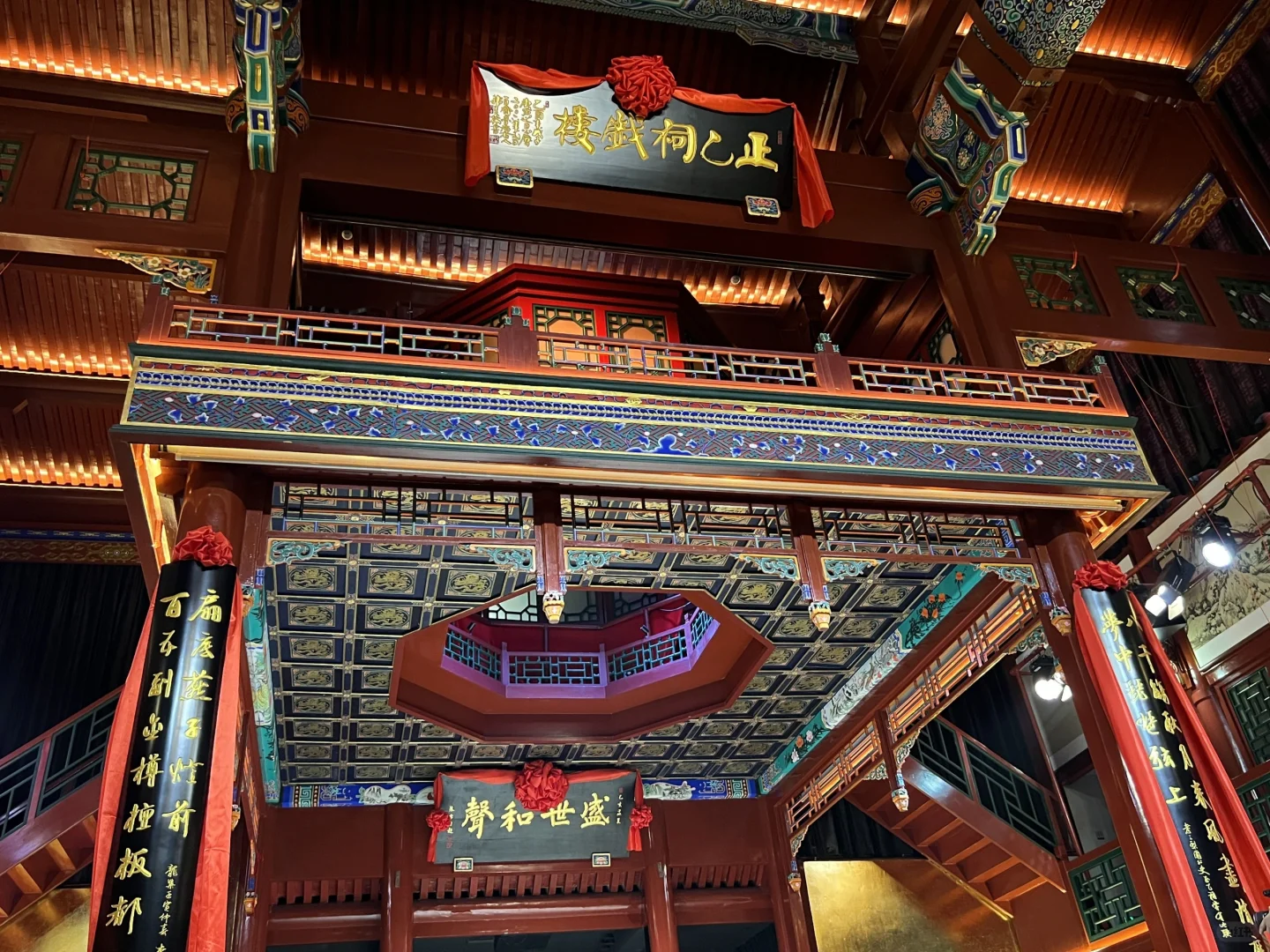
If you only shop at Wangfujing, it’s like going to Chongqing without trying hotpot; spend two hours diving into Zhengyi Ci and watching a vibrant Peking Opera, then leave with a photo of “me and the stars,” that’s when Beijing really lands in your memory.
A personal guide to seven essential dining spots in the 798 Art District, offering delicious food perfect for gatherings. Each restaurant's signature dishes and average costs are detailed to provide you with a practical culinary guide.
Beihai Park is a captivating garden where the entrance fee is only 10 yuan. Visitors can enjoy a variety of beautiful landscapes with a recommended route that's easy to follow, making it suitable for all types of tourists. The park features attractions like the Quiet Mind Studio and the Nine-Dragon Screen, as well as rentable boats and a variety of blooming flowers. It's a perfect spot for photography and relaxation, and we highly encourage visitors to go.
Delve into the celestial coffered ceilings at Beijing's Ancient Architecture Museum, where you can admire the 1,427 stars of the Ming Dynasty's celestial design. Experience the charm of national treasures, discover unique pathways and hidden experiences, and immerse yourself in the romance and mystery of ancient architecture.
Explore local city guides and travel stories to build an authentic China itinerary.
Take a stroll through Beijing's hutongs this autumn, discovering charming doorways that showcase the rich seasonal ambiance and local culture.

Experience the best value Xiangsheng in Beijing with a three-hour laughter-filled session at this comedy event. It’s an experience you simply can’t miss!

This article unveils the most breathtaking Citywalk routes in Beijing, featuring areas like Dongjiaominxiang and Xixinglong Street, along with a selection of charming shops and food recommendations, perfect for weekend exploration and capturing memories.

Discover an essential 3-day itinerary for your first visit to Beijing, featuring key attractions, local delicacies, transportation tips, and common pitfalls to avoid, ensuring a smooth exploration of this city where history meets modernity.

Discover eight authentic copper pot hotpot restaurants recommended by locals, offering genuine flavors and great value that will leave you craving more.
